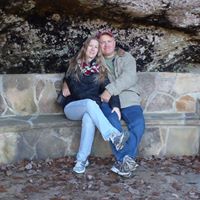Michael L Driver
age ~77
from The Villages, FL
- Also known as:
-
- Michael Lenn Driver
- Mike Driver
- Ml Driver
Michael Driver Phones & Addresses
- The Villages, FL
- Plantation, FL
- 1225 Vienna Dr, Sunnyvale, CA 94089
- Clearlake, CA
- Loma Mar, CA
- Mountain View, CA
- Santa Clara, CA
- Lake La, CA
- San Mateo, CA
- 1225 Vienna Dr SPC 977, Sunnyvale, CA 94089 • (408)4557507
Work
-
Company:RE/MAX of Greensboro
-
Address:204 Muirs Chapel Road
-
Phones:(336)2988289 (336)8542170
Education
-
Degree:High school graduate or higher
Images
Emails
Specialities
Buyer's Agent • Listing Agent • Foreclosure • Property Management
Lawyers & Attorneys
Real Estate Brokers

Michael Driver, Greensbro NC Realtor, Broker, Licensed in South Carolina
view sourceSpecialties:
Buyer's Agent
Listing Agent
Foreclosure
Property Management
Listing Agent
Foreclosure
Property Management
Work:
RE/MAX of Greensboro
204 Muirs Chapel Road
(336)2988289 (Office), (336)2988289 (Cell), (336)8542170 (Fax)
204 Muirs Chapel Road
(336)2988289 (Office), (336)2988289 (Cell), (336)8542170 (Fax)
Experience:
14 years
Licenses:
67516 (Licensed in South Carolina)
Links:
Site
Blog
Facebook
Twitter
LinkedIn
Blog
License Records
Michael J Driver
Address:
324 NW 26 Ct, Wilton Manors, FL
5301 Congress Ave, Atlantis, FL
Phone:
(954)2637386
License #:
3346072 - Active
Category:
Health Care
Issued Date:
Jan 14, 1999
Effective Date:
Jan 1, 1901
Expiration Date:
Jul 31, 2018
Type:
Registered Nurse
Medicine Doctors

Michael K. Driver
view sourceSpecialties:
Emergency Medicine
Work:
Clarkston Emergency PhysClarkston Emergency Physicians
1221 Highland Ave, Clarkston, WA 99403
(509)7584665 (phone), (509)7584065 (fax)
1221 Highland Ave, Clarkston, WA 99403
(509)7584665 (phone), (509)7584065 (fax)
Education:
Medical School
Oregon Health & Science University School of Medicine
Graduated: 1980
Oregon Health & Science University School of Medicine
Graduated: 1980
Procedures:
Arthrocentesis
Lumbar Puncture
Vaccine Administration
Lumbar Puncture
Vaccine Administration
Conditions:
Acute Upper Respiratory Tract Infections
Fractures, Dislocations, Derangement, and Sprains
Migraine Headache
Otitis Media
Skin and Subcutaneous Infections
Fractures, Dislocations, Derangement, and Sprains
Migraine Headache
Otitis Media
Skin and Subcutaneous Infections
Languages:
English
Description:
Dr. Driver graduated from the Oregon Health & Science University School of Medicine in 1980. He works in Clarkston, WA and specializes in Emergency Medicine. Dr. Driver is affiliated with Tri-State Memorial Hospital.
Name / Title
Company / Classification
Phones & Addresses
Treasurer
NANEUM LIMITED
Vice President
O T O W MEN'S GOLF ASSOC. INC
Ret Men's/Boy's Clothing
Ret Men's/Boy's Clothing
9153 SW 91 Ter, Ocala, FL 34481
9708 SW 97 St, Ocala, FL 34481
9662 SW 96 St, Ocala, FL 34481
8207 Sw79 Ct, Ocala, FL 34476
9708 SW 97 St, Ocala, FL 34481
9662 SW 96 St, Ocala, FL 34481
8207 Sw79 Ct, Ocala, FL 34476
Us Patents
-
Separation Of Olefins From Paraffins Using Ionic Liquid Solutions
view source -
US Patent:6339182, Jan 15, 2002
-
Filed:Dec 12, 2000
-
Appl. No.:09/735176
-
Inventors:Curtis L. Munson - Oakland CA
Laura C. Boudreau - Lafayette CA
Michael S. Driver - San Francisco CA
William L. Schinski - San Rafael CA -
Assignee:Chevron U.S.A. Inc. - San Ramon CA
-
International Classification:C07C 700
-
US Classification:585809, 585843, 585845, 585849, 585850, 585848, 208219, 208223
-
Abstract:Methods for separating olefins from non-olefins, such as parafins, including cycloparaffins, oxygenates and aromatics, are provided. The methods use metal salts to complex olefins, allowing the non-olefins to be separated by a variety of methods, including decantation and distillation. The metal salts are dissolved in ionic liquids, which tend to have virtually no vapor pressure, and which poorly solubilize the non-olefins. Accordingly, the non-olefins phase separate well, and can be distilled without carrying over any of the ionic liquid into the distillate. Preferred salts are Group IB salts, more preferably silver salts. A preferred silver salt is silver tetrafluoroborate. Preferred ionic liquids are those which form stable solutions or dispersions of the metal salts, and which do not dissolve the non-olefins. Further, if the olefins are subject to isomerization, the ionic liquid is preferably relatively non-acidic. The methods involve forming a solution of a suitable olefin-complexing salt in an appropriate ionic liquid.
-
Separation Of Olefins From Paraffins Using Ionic Liquid Solutions
view source -
US Patent:6623659, Sep 23, 2003
-
Filed:Dec 3, 2001
-
Appl. No.:09/998138
-
Inventors:Curtis L. Munson - Oakland CA
Laura C. Boudreau - Lafayette CA
Michael S. Driver - San Francisco CA
William L. Schinski - San Rafael CA -
Assignee:Chevron U.S.A. Inc. - San Ramon CA
-
International Classification:C09K 300
-
US Classification:252184, 585856, 585857
-
Abstract:Methods for separating olefins from non-olefins, such as paraffins, including cycloparaffins, oxygenates and aromatics, are provided. The methods use metal salts to complex olefins, allowing the non-olefins to be separated by a variety of methods, including decantation and distillation. The metal salts are dissolved in ionic liquids, which tend to have virtually no vapor pressure, and which poorly solubilize the non-olefins. Accordingly, the non-olefins phase separate well, and can be distilled without carrying over any of the ionic liquid into the distillate. Preferred salts are Group IB salts, more preferably silver salts. A preferred silver salt is silver tetrafluoroborate. Preferred ionic liquids are those which form stable solutions or dispersions of the metal salts, and which do not dissolve the non-olefins. Further, if the olefins are subject to isomerization, the ionic liquid is preferably relatively non-acidic. The methods involve forming a solution of a suitable olefin-complexing salt in an appropriate ionic liquid.
-
Enrichment Of Monounsaturated Acids/Esters In Vegetable Oil—Or Animal Fat-Based Feedstock Using Metal Salts Dissolved In Ionic Liquids
view source -
US Patent:8173826, May 8, 2012
-
Filed:Jun 17, 2009
-
Appl. No.:12/486463
-
Inventors:Prakhar Prakash - San Ramon CA, US
Michael Driver - San Francisco CA, US
Zunqing He - San Rafael CA, US -
Assignee:Chevron U.S.A. Inc. - San Ramon CA
-
International Classification:C11B 7/00
-
US Classification:554206
-
Abstract:In some embodiments, the present invention relates to an enrichment process that involves a separation and/or fractionation and/or enrichment of monounsaturated fatty acid/ester molecules from polyunsaturated fatty acid/ester molecules or, correspondingly, monounsaturated molecules from saturated molecules. Such processes are at least partially based on π(pi)-complexation between metal ions and unsaturated bonds of the extractible molecules (fatty acids/esters), wherein a greater degree of unsaturation provides for greater coordinating (bond) strength and corresponding selectivity in the associated π-complexation with metal ions.
-
Separations With Ionic Liquid Solvents
view source -
US Patent:20170305817, Oct 26, 2017
-
Filed:Jul 6, 2017
-
Appl. No.:15/642550
-
Inventors:- The Woodlands TX, US
- San Ramon CA, US
Michael S. DRIVER - Oakland CA, US
Hye Kyung TIMKEN - Albany CA, US -
International Classification:C07C 7/11
C07C 7/152
B01D 53/14
B01D 53/14
B01D 53/14
B01D 53/14
B01D 53/14
B01D 53/22
B01D 53/52
B01D 53/62
B01D 53/72
B01D 53/78
C01B 17/16
C07C 7/144
C07C 7/00
C07C 7/156
B01D 53/14
B01D 53/52 -
Abstract:Disclosed are systems and methods which provide a process stream comprising a gaseous component, capture the gaseous component from the process stream by an ionic liquid solvent of a separator, and recover a captured gaseous component from the ionic liquid solvent in a regenerator. A second gaseous component from the process stream may be captured by the ionic liquid solvent of the separator, and the second gaseous component may be recovered from the ionic liquid solvent in the regenerator. Alternatively, the second gaseous component from the process stream may be uncaptured by the ionic liquid solvent, and the uncaptured second gaseous component may be recovered from a membrane unit.
-
Separations With Ionic Liquid Solvents
view source -
US Patent:20160096784, Apr 7, 2016
-
Filed:Dec 11, 2015
-
Appl. No.:14/966208
-
Inventors:- San Ramon CA, US
- The Woodlands TX, US
Michael S. DRIVER - Oakland CA, US
Hye-Kyung TIMKEN - Albany CA, US -
International Classification:C07C 7/11
C07C 7/144
C07C 7/00
B01D 53/14
B01D 53/22 -
Abstract:Disclosed are systems and methods which provide a process stream comprising a gaseous component, capture the gaseous component from the process stream by an ionic liquid solvent of a separator, and recover a captured gaseous component from the ionic liquid solvent in a regenerator. A second gaseous component from the process stream may be captured by the ionic liquid solvent of the separator, and the second gaseous component may be recovered from the ionic liquid solvent in the regenerator. Alternatively, the second gaseous component from the process stream may be uncaptured by the ionic liquid solvent, and the uncaptured second gaseous component may be recovered from a membrane unit.
-
Separations With Ionic Liquid Solvents
view source -
US Patent:20150133711, May 14, 2015
-
Filed:Jan 15, 2015
-
Appl. No.:14/597415
-
Inventors:- The Woodlands TX, US
- San Ramon CA, US
Michael Sean Driver - Oakland CA, US
Hye-Kyung Cho Timken - Albany CA, US -
International Classification:C07C 7/11
C07C 7/00
C07C 7/144
B01D 53/14 -
US Classification:585802, 585844
-
Abstract:Disclosed are systems and methods which provide a process stream comprising a gaseous component, capture the gaseous component from the process stream by an ionic liquid solvent of a separator, and recover a captured gaseous component from the ionic liquid solvent in a regenerator. A second gaseous component from the process stream may be captured by the ionic liquid solvent of the separator, and the second gaseous component may be recovered from the ionic liquid solvent in the regenerator. Alternatively, the second gaseous component from the process stream may be uncaptured by the ionic liquid solvent, and the uncaptured second gaseous component may be recovered from a membrane unit.
-
Separations With Ionic Liquid Solvents
view source -
US Patent:20150030524, Jan 29, 2015
-
Filed:Jul 23, 2013
-
Appl. No.:13/948861
-
Inventors:- The Woodlands TX, US
- San Ramon CA, US
Michael S. Driver - Oakland CA, US
Hye-Kyung Timken - Albany CA, US -
International Classification:B01D 53/14
C01B 17/16
C07C 7/11
B01D 53/62
B01D 53/52
B01D 53/72
C01B 31/20
B01D 53/78 -
US Classification:4234371, 423563, 422255, 585844, 585843, 585818
-
Abstract:Disclosed are systems and methods which provide a process stream comprising a gaseous component, capture the gaseous component from the process stream by an ionic liquid solvent of a separator, and recover a captured gaseous component from the ionic liquid solvent in a regenerator. A second gaseous component from the process stream may be captured by the ionic liquid solvent of the separator, and the second gaseous component may be recovered from the ionic liquid solvent in the regenerator. Alternatively, the second gaseous component from the process stream may be uncaptured by the ionic liquid solvent, and the uncaptured second gaseous component may be recovered from a membrane unit.
Resumes

Clinical Account Specialist
view sourceLocation:
586a Tulip Grove Rd, Hermitage, TN 37076
Industry:
Medical Devices
Work:
Biosense Webster
Clinical Account Specialist
Clinical Account Specialist
Education:
La Salle University

Michael Driver
view source
Michael Aserov Bodyguard Driver
view source
Michael Driver
view source
Michael Driver
view source
Michael Driver
view source
Michael Driver
view source
Michael Driver
view sourceIsbn (Books And Publications)

The Dynamic Decision Maker: Five Decision Styles for Executive and Business Success
view sourceAuthor
Michael J. Driver
ISBN #
0608216038

The Dynamic Decision Maker: Five Decision Styles for Executive and Business Success
view sourceAuthor
Michael J. Driver
ISBN #
0887302971
Plaxo

Michael Driver
view source
Michael Driver
view sourcePatton Boggs

Michael Driver
view sourceProprietor at MS2 Architectural consultants

Michael Driver
view source
Michael Raymd Driver
view source
Michael Scott Driver
view source
Michael Driver
view source
Dte Michael Driver
view source
Michael Driver
view source
Michael A Driver
view source
Brand Michael Driver
view sourceYoutube
Googleplus

Michael Driver
Relationship:
Married

Michael Driver

Michael Driver

Michael Driver

Michael Driver

Michael Driver

Michael Driver

Michael Driver
Myspace
Classmates

Michael Driver
view sourceSchools:
Ethel R. Jones Elementary School Portage IN 1970-1975, Grissom MIddle School Portage IN 1975-1979
Community:
Edna Maturkanich, Rod Dennison, Kevin Durning

Michael Driver
view sourceSchools:
Washington Junior High School Pensacola FL 1985-1989
Community:
George Pierce

Michael Driver
view sourceSchools:
Osborne High School Marietta GA 1967-1971
Community:
John Neff, Chris Schnick

Michael Driver
view sourceSchools:
Arlington High School 722 Indianapolis IN 1980-1984
Community:
Jerry Glass

Michael Driver
view sourceSchools:
Bibb County High School Centreville AL 1996-2000
Community:
Kenny Johnson

Michael Driver
view sourceSchools:
Lafayette High School Mayo FL 1994-1998
Community:
Norma Cobb, Michael Wilder, Edward Thomas, Donna Land

Michael Driver
view sourceSchools:
Pfeiffer College Misenheimer NC 1965-1969
Community:
Christy Yow, Patricia Smith, James Deramus, Charles Licari, Laurence Campbell, William Cash, Bonnie Kirby, Judy Beaver, Edward Cramer, Mandel Lesourd, Wiley Huneycutt

Michael Driver, Portage H...
view sourceFlickr
Get Report for Michael L Driver from The Villages, FL, age ~77





















